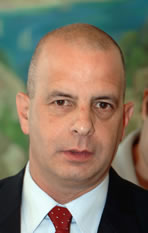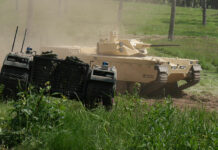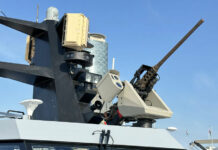The first decade of the 21st century demonstrated the potential risk of modern terror, and how determined response, led by dedicated personnel, backed by technological and a legal infrastructure, can defeat terror attacks.
Facing terror for over 60 years, Israel has developed the methods, means and procedures, to effectively combat this dangerous phenomena. During the 1970s most attacks were directed at Israeli-related aviation – airlines flying to and from the country. Palestinian terror activities gradually escalated, through domestic and cross-border attacks, through popular uprisals in the occupied territories, in the 1980s and a guerilla-like campaign in South Lebanon, waged through the 1990s.
Yet the terror campaign against Israel culminated in the early 2000s, as Palestinian Tanzim, Islamic Jihad and Hamas organizations launched a massive onslaught, employing a new type of weapon – suicide attacks – directed primarily against Israel’s civilian population. This weapon was the most effective the terrorist organizations possessed – less than one percent of the activists were responsible to more than half of the casualties caused to the other side.
Israel’s security services required time to adjust and develop new and effective countermeasures to combat the new threat of suicide bombers. The results were remarkable: Compared to 452 suicide attacks carried out by the Palestinians in 2003, only two suicide attacks occurred since 2007. (see also: “Suicide Bombers as Weapons“)
According to Yuval Diskin, Director, Israel Security Agency (ISA – Shin Bet), the winning formula developed by Israel’s security services is based on jointness – the ability of all services to work together, sharing operational concepts (CONOPS), with a clear definition of the combined objective for all the organizations engaged in homeland security and defense. Multidisciplinary intelligence activity, based on advanced technological and human intelligence, tailored and channeled through processing and dissemination, means to turn intelligence from raw data into an operationally valuable, real-time asset. “Operational systems must be adapted and learn to operate as efficiently as possible with such real-time intelligence assets” said Diskin.
Such adaptation is enabled by introducing technological means to improve connectivity, interoperability and joint operations by combined task forces, composed of elements from different organizations, such as ISA, National Police, Army and Air Force. Under such a cooperation umbrella, different organizations must share common counter-terror techniques, tactics and procedures (TTP), optimizing for rapid response, based on real-time intelligence. According to Diskin, the main advantage of the joint-operating concept is by combining the unique capabilities and characteristics of each of the participating organizations. “The main challenge is not integrating the technologies, but overcoming leadership and human nature obstacles” Diskin added.
One of the keys to establishing jointness was the setup of inter-service command posts, manned by representatives from all the services and organizations involved in operations.
Interoperability also requires maintaining real-time common operational pictures among all organizations – a task achieved by implementing common communications interfaces among all organizations, enabling real-time information flow between command centers. These preparations paid dividends in recent years, as Israel’s security services managed to repel multiple Palestinian terror attacks, intercepting suicide bombers before they could reach their targets.
Diskin considers the legal infrastructure a critical element in the success of Israel’s counter-terror campaign. “It took Israeli lawmakers 14 years to agree on the legal framework for the ISA, until the so-called ‘ISA Law’ was completed in 2002. Once implemented, this legal foundation became instrumental for the success of Israel’s counter-terror campaign.” Said Diskin.
The absence of terror strikes does not indicate that Israel’s security organizations are remaining idle. On the contrary, during this period the Palestinians in the West Bank continuously and relentlessly prepared and launched attacks. They trained hundreds of potential suicide bombers and managed to launch about 120 attacks, alas, almost all were intercepted and repelled by Israel’s security services. Real-time intelligence and the combined, rapid response capability developed by the ISA, the Special Police Unit, military and air force elements were instrumental factors for thIs remarkable anti-terror success.
According to Diskin, ISA’ special operations units and the Police Special Unit (yamam) were able to intercept most of these suicide bombers before theise could reach their objectives. “It takes a suicide bomber launched from Nablus about 60 minutes to reach his target in a major Israeli city like Netanya” explains Diskin, “we had to tailor our response to meet this short cycle”. Typically, the ISA would get fragments of information about an imminent terror act before, or when the suicide bomber is launched, immediately triggering an early warning. When such intelligence was accurate enough, pre-emptive action would take place.
But when the first indication is received after the suicide bomber leaves on its final mission,all the fragmented intelligence must be gathered and updated continuously, developed into a clear understanding of the threat and its potential target, enabling to scramble the rapid-response teams to disrupt the threat’s movement. These action teams are called to establish contact with the target, identify the threat and eliminate it before reaching its target. These operational teams are controlled by the inter-agency operational command and control centers, conducting the entire intercept, feeding on all intelligence sources throughout the event, to maintain a constant situational picture in real-time.
It took years to prepare all the organizations responsible for homeland security to operate effectively under these short timelines. “These capabilities must be prepared in advance, in order to work effectively in time of crisis” Diskin concludes.
Future threats are expected to be more complex, as terrorist organizations, operating in the modern, globalized and networked world are less hierarchical, more elusive than ever. In fact, most Islamic terror organizations are ‘state sponsored’, even when they do not have direct geographical access to the host nation. For example, Palestinian terrorist movements in Gaza, like the Islamic Jihad and Hamas get their weapons from sponsoring nations like Iran or North Korea. The military supplies are shipped through a global supply network by sea, with destinations in Yemen or Sudan. From clandestine beachheads the loads are smuggled over-land, entering Gaza through tunnels dug under the Egyptian – Gaza border at Rafah. Palestinian terror activists are also sent to Iran to train in the operation of these weapons. The level and sophistication of weapons accessible by terrorists is becoming unprecedented – ranging from advanced, powerful explosives, to anti-aircraft missiles, guided weapons, unmanned aerial vehicles, long range rockets and missiles.
Cyber terrorism is also becoming a growing challenge, and, since such activities are performed over cyberspace, the location of the perpetrators is irrelevant to their ability to cause harm, get support or access their targets.
In fact, the global Internet provides terrorists with many advantages, including recruitment tools – certain social network sites and chat-rooms where potential candidates undergo ‘brainwashing’, with their minds being indoctrinated and ‘tendered’, preparing them for potential suicide attacks. Other sites are used as indoctrination, and training tools, transferring knowledge and developing skills among remotely located recruits, on how to prepare improvised weapons, counter-intelligence actions and terror cells operations.
Terrorist’s cybernetic capabilities also exploit the information services made available for peaceful purposes, such as GPS and geospatial intelligence, real-time communications via Internet, cellular phones or messaging devices, powerful encryption devices etc. These capabilities are added to the determination and willingness of terrorist organizations to carry out ‘mega-terror’ actions, regardless of the casualties or damage they cause.
“The world can successfully defeat and win the war against global terror” Diskin stated, ” But to win this war, the nations determined to fight terror, must join forces, develop joint intelligence and effective operational capabilities.”
According to Diskin, such joint operability must rely on close cooperation among intelligence agencies, establishing an agreeable legal framework among nations that will eliminate potential loopholes to be exploited by terrorists, and formulating cooperation among homeland security and counter-terror organizations from different countries, by developing joint operational capabilities. “The is a growing understanding and openness to these cooperative principles among the countries facing terror threats” Diskin concluded.
















